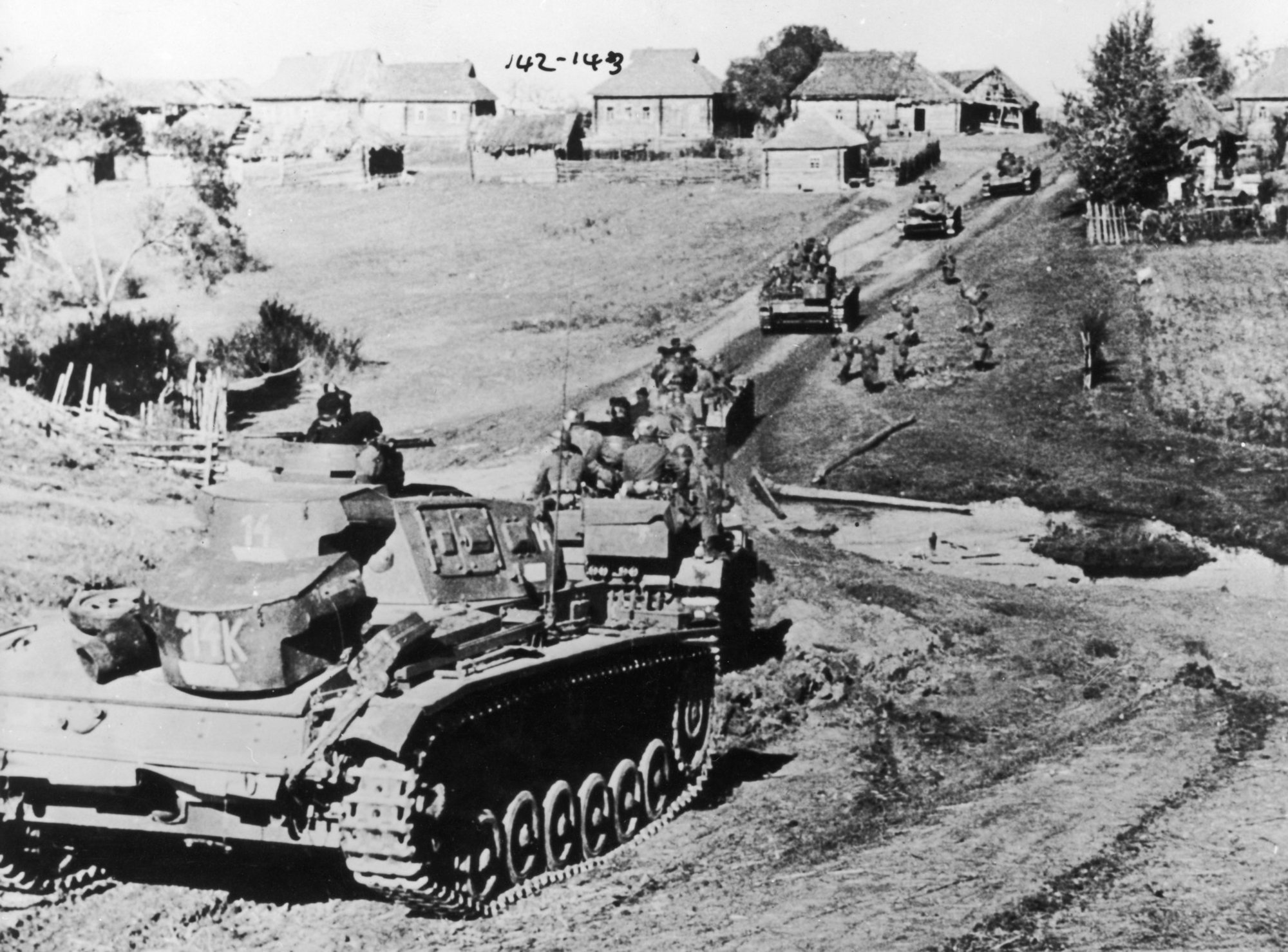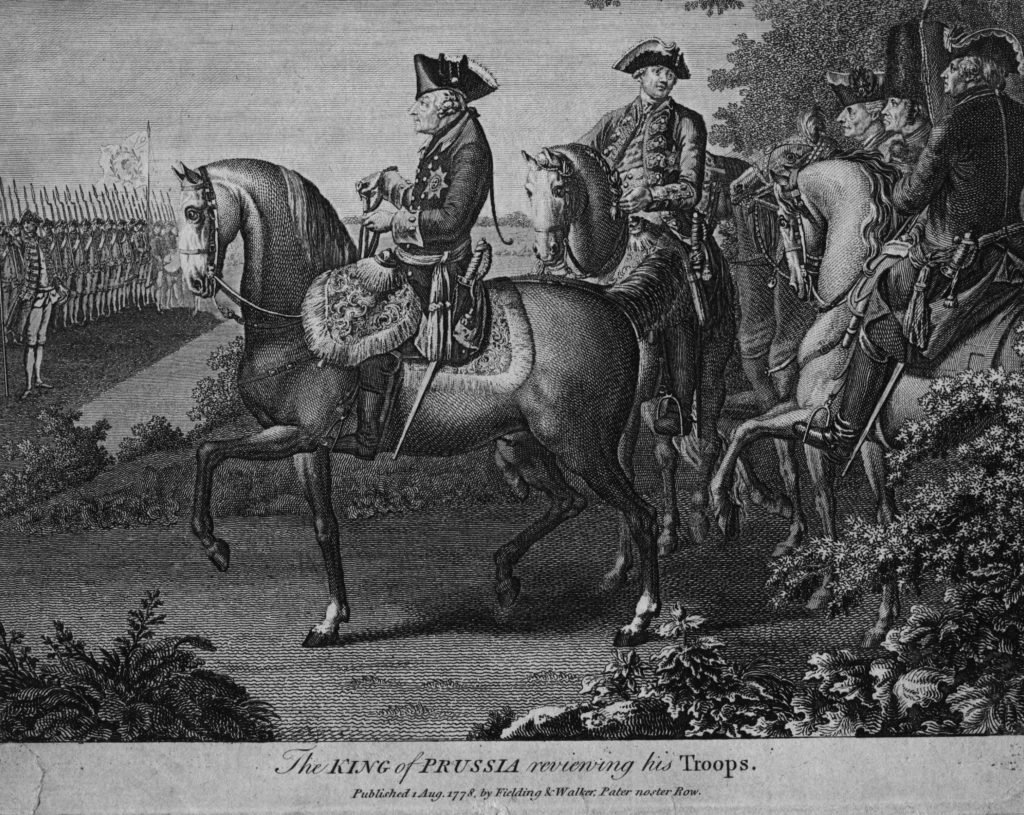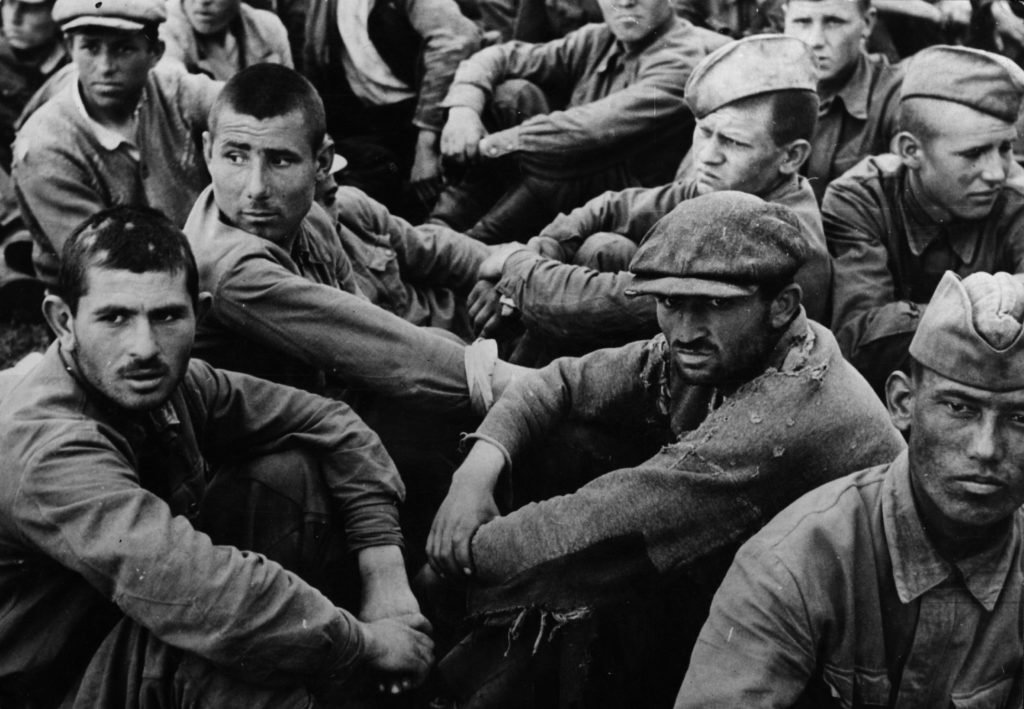Operation Barbarossa: The German Army Meets Its Match in World War II

A Photograph of German Tanks Advancing towards a Soviet Village during Operation Barbarossa. October 29th, 1941. Photo by Fotosearch/Getty Images.
In the early hours of June 22, 1941, Adolf Hitler ordered the Nazi Wehrmacht to invade the Soviet Union. Operation Barbarossa would end up being the largest invasion in history. The operation’s name was peculiar. “Barbarossa” was a medieval Germanic king who drowned in a river while on a fool’s errand.
It was a war of ideologies on the Eastern front, but unlike the West’s campaign to repel Hitler, it was not good versus evil. The Eastern front was Nazism against Stalinism — or, at its most basic level, fascism versus communism. It was also a war of extermination — vernichtungskrieg in German. Two of the most brutal autocrats in history, Adolf Hitler and Joseph Stalin, were sending millions to die in battle in what history would come see as a bout between the bad and the worse.

Since the end of World War II, a narrative of German military prowess has emerged as a dominant train of thought, the blame for their defeat often being credited to the harsh winter conditions in Russia rather than their unsuccessful military tactics and strategies. Often, this idea originates within the memoirs of surviving German officers like Heinz Guderian. This narrative also includes claims that the Wehrmacht was innocent of the crimes committed by the Nazi regime elsewhere, which is blatantly false. The Wehrmacht was just as guilty of genocide, deportations, and the general depravity their government is now known for.
The former rumor, however, seems to have a stronger hold, necessitating a stronger look into the military causes of the Germans’ defeat.
What was it about German warfighting that failed? Why did it fail? And how deeply rooted were those failures in the mentality of the Prussian-German military?
While the Germans of World War II were masters of operational warfare — mobile tank pincers and division-level movement — they lacked coherent strategy. … Like a man breaking through a wall, the Germans stumbled upon their own success.
Dr. Robert Citino, who taught at the U.S. Army War College and currently serves as executive director of the Institute for the Study of War and Democracy, released “Death of the Wehrmacht: The German Campaigns of 1942” in 2007, and it’s a wealth of information on this topic.
One of the first ideas that the book establishes is how Blitzkrieg is not a German military term in any serious sense. The word the Germans used was Bewegungskrieg, which translates to “maneuver warfare.”
This was by no means a new idea to German officers in the 1930s and 1940s.
In 1754, Frederick II, the Great decided to expand the holdings of his small Prussian Kingdom. The war developed into the Seven Years’ War, and it was truly the first world war, fought from Canada to France to India.

Frederick knew that his wars had to be “kurz und vivres” — short and lively — otherwise Prussia’s larger and richer enemies would win a drawn-out war of attrition, or stellungskrieg. To achieve this, Frederick relied on rapid maneuver around enemy flanks like at Leuthen and Rossbach. Despite this, Frederick fell afoul of his own advice and nearly paid with his life and his kingdom. Only the death of Russian Tsarina Elizabeth Petrovna saved Frederick’s Prussia in 1762.
In 1870 to ’71, Prussia successfully formed Germany by smashing France in a rapid war of maneuver. Germany again tried and failed to fight a “short and lively” war against France in 1914. The German defeat at the Marne led to nearly four years of trench stalemate, just the type of war Germany had little chance of winning.
While the Germans of World War II were masters of operational warfare — mobile tank pincers and division-level movements — they lacked coherent strategy. German units invading the Soviet Union in the opening months of Barbarossa struck at will, with high aggression and minimal coordination. Like a man breaking through a wall, the Germans stumbled upon their own success.
An army dedicated to grand offensives cannot last long when pressed hard by a foe willing and able to play the long game.
While this operational scheme worked on smaller nations such as Poland, Denmark, and France, it created chaos and logistical problems in a nation as massive as the USSR. Bewegungskrieg only worked when the German army could shatter their enemy in a single, front-loaded offensive.
This is where the real weakness of Bewegungskrieg could be exploited. The Germans, despite their love of grand maneuver, often forgot that logistics and intelligence were crucial to a successful campaign. This is truly hard to understand. Any toddler can inform you that when the food runs out, things get bad.
But, nevertheless, the Germans invaded the largest nation on Earth without a proper logistical plan. And they simply expected it to work without any further reasoning or improvement of logistical pipelines.
Additionally, German intelligence, the Abwehr, was truly woeful, having underrated the Soviet army strength at 200 divisions when the right answer was approximately 360 in 1941.

That would prove to be a catastrophic intelligence failure.
These factors combined to create a perfect storm that led the Wehrmacht to grind itself into smithereens by driving too hard, too fast. By overextending their supply lines and operating without a strategic thought in their minds, the Germans put their own heads into the Soviet noose.
That noose tightened on the German Army Group Center outside of Moscow in December 1941. In “Death of the Wehrmacht,” Citino points out that many historians say the Germans were stopped in front of Moscow. In reality, the Germans wish they had only been stopped. When the Soviet counteroffensive opened under the command of the legendary Marshal Zhukov, the Red Army tore a tremendous gap in the thin Wehrmacht positions.
German units near Moscow simply evaporated. It was an extraordinary defeat, hardly one that jives with the modern idea of the Wehrmacht as a wonderfully competent force.
The Germans dug their own grave; the Red Army put them in it. The Wehrmacht operated in the shadow of Frederick the Great, for better and for worse. Frederick was aggressive and often won, but he also lost a lot. High aggression can overwhelm an enemy, but when a “short and lively” war becomes a strategic grind, an army built for rapid, concentric maneuver falters.
So, why did the Germans lose? There’s no simple explanation. Anyone who tries to reduce such a momentous event to a single word or concept is dangerously oversimplifying. However, the German doctrine of Bewegungskrieg, inherited from their Prussian forebears, led the Wehrmacht toward defeat in the USSR.
The Wehrmacht was hardly a force of mythological power, and, in the end, it fell apart on the Ukrainian steppes, in the Byelorussian swamps, and in the boreal forest. An army dedicated to grand offensives cannot last long when pressed hard by a foe willing and able to play the long game.

Garland Kennedy is a contributing writer for Coffee or Die. As an avid backpacker and outdoorsman, he has explored wide-open spaces all over North America — from the forests of North Carolina (he’s a graduate of UNC-Chapel Hill with a degree in medieval history) to the mountains of Alaska. His previous bylines include gear reviews on RockChuckSummit.com.
BRCC and Bad Moon Print Press team up for an exclusive, limited-edition T-shirt design!
BRCC partners with Team Room Design for an exclusive T-shirt release!
Thirty Seconds Out has partnered with BRCC for an exclusive shirt design invoking the God of Winter.
Lucas O'Hara of Grizzly Forge has teamed up with BRCC for a badass, exclusive Shirt Club T-shirt design featuring his most popular knife and tiomahawk.
Coffee or Die sits down with one of the graphic designers behind Black Rifle Coffee's signature look and vibe.
Biden will award the Medal of Honor to a Vietnam War Army helicopter pilot who risked his life to save a reconnaissance team from almost certain death.
Ever wonder how much Jack Mandaville would f*ck sh*t up if he went back in time? The American Revolution didn't even see him coming.
A nearly 200-year-old West Point time capsule that at first appeared to yield little more than dust contains hidden treasure, the US Military Academy said.












